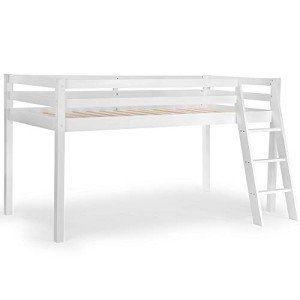The Ultimate Guide to Bunk Beds for Children: Safety, Styles, and Benefits
When it pertains to styling a kid's room, moms and dads typically face the double obstacle of maximizing space while guaranteeing comfort and performance. Bunk beds have become a popular service that resolves these needs, using not simply sleeping arrangements but also contributing to a space's aesthetic. In Full Statement , we will look into different elements of children's bunk beds, concentrating on their advantages, security features, designs, and factors to consider for parents contemplating this purchase.
Tabulation
- Advantages of Bunk Beds
- Safety Features to Consider
- Types of Bunk Beds
- Design and Style Options
- Maintenance Tips
- Frequently Asked Questions (FAQs)
1. Benefits of Bunk Beds
Bunk beds offer various advantages for kids and their moms and dads. Here are some key advantages:
- Space-Efficiency: Bunk beds are an exceptional service for smaller sized spaces. By stacking one bed on top of another, more floor space is available for play, storage, or study areas.
- Economical: When children share rooms, bunk beds can decrease the need for acquiring 2 separate beds, hence saving money.
- Promotes Social Interaction: Bunk beds can assist brother or sisters or friends bond by sharing a space, creating opportunities for social development.
- Enjoyable Factor: The concept of sleeping "up high" includes a lively element to bedtime, making the shift to sleeping alone simpler for some kids.
- Versatile Design: Bunk beds can be found in different styles, colors, and develops to match any room theme, permitting customization that shows the kid's character.
2. Security Features to Consider
Security is critical when it pertains to kids's furnishings, specifically when it comes to bunk beds. Here are some vital security features to assess:
| Safety Feature | Description |
|---|---|
| Durable Construction | Frames made of strong wood or metal are chosen. |
| Guardrails | Need to be at least 5 inches high and extend along both sides of the upper bunk. |
| Ladder Design | Ensure ladders are securely connected and have non-slip steps. |
| Mattress Size & & Fit | Should fit comfortably within the frame to avoid gaps. |
| Weight Limit | Constantly stick to the producer's weight limit suggestions. |
3. Types of Bunk Beds
Bunk beds come in a number of styles, accommodating different requirements, choices, and room sizes. Here are some common types:
- Standard Bunk Bed: The a lot of basic type, with one bed on top of another.
- Loft Bed: Features a high upper bed with space below for a desk or play area.
- Futon Bunk Bed: Combines a leading bunk with a futon on the bottom, offering versatility for seating and sleeping.
- L-Shaped Bunk Bed: This style has the leading bunk set at a perpendicular angle to the bottom, developing a little corner area.
- Triple Bunk Bed: Accommodates three kids using stacked beds, perfect for big families or sleepovers.
4. Design and Style Options
When it pertains to selecting a design for kids's bunk beds, the options are virtually limitless. Here are some popular designs:
- Traditional Style: Often made from wood, these bunk beds include ornate details and are perfect for classic or rustic-themed spaces.
- Modern Style: Characterized by clean lines and minimalist styles, modern bunk beds can be made of metal or wood.
- Themed Bunk Beds: Some brand names provide bunk beds formed like castles, cars and trucks, or play houses, making bedtime less of a task.
- Convertible Bunk Beds: These can be separated into 2 individual beds, using flexibility as children grow.
- Colorful Options: Bunk beds in lively colors can add a sense of joy and playfulness to any room.
5. Upkeep Tips
Keeping a bunk bed is important for durability and safety. Here are some tips:
- Regular Inspections: Check for loose screws or bolts every few months and tighten them as needed.
- Cleaning: Wipe down frames routinely to prevent dust build-up; consider using a vacuum for hard-to-reach areas.
- Mattress Care: Rotate bed mattress frequently and use protective covers to lengthen their life.
- Expect Wear and Tear: Look for any signs of damage in the wood or metal and consider changing parts if required.
- Teach Kids Safety Rules: Encourage children to use ladders effectively and ensure they comprehend the safety features of their bed.
6. Regularly Asked Questions (FAQs)
Q1: What age is appropriate for oversleeping a leading bunk?
A1: Typically, kids aged 6 and older are advised for upper bunk sleeping, as they have the necessary motor abilities to climb safely.
Q2: Do bunk beds feature a mattress?
A2: Most bunk beds are sold as frames just, so you will require to buy mattresses individually. Guarantee that the mattress fits the frame snugly.
Q3: Can bunk beds be separated later?
A3: Many styles allow conversion into two private beds, supplying flexibility for future needs.
Q4: How can I ensure my kid's safety on a bunk bed?
A4: Comply with safety standards and make sure guardrails, a sturdy frame, and a secured ladder remain in place.
Q5: Are there weight limitations on bunk beds?
A5: Yes, always inspect the manufacturer's requirements relating to weight limits to guarantee security.
Bunk beds for children can serve numerous functions while ensuring safety and design. With varied designs and designs readily available on the market, moms and dads can discover an unit that not only makes the most of bed room space however likewise reflects their child's distinct tastes. Just like any furnishings, comprehending security functions, maintenance, and how they suit a kid's lifestyle will ensure that these beds remain a practical furnishings service for several years to come.
Through mindful consideration and adherence to security standards, bunk beds can provide a lasting, enjoyable, and practical sleeping solution that kids love.

